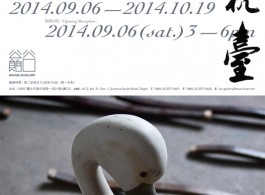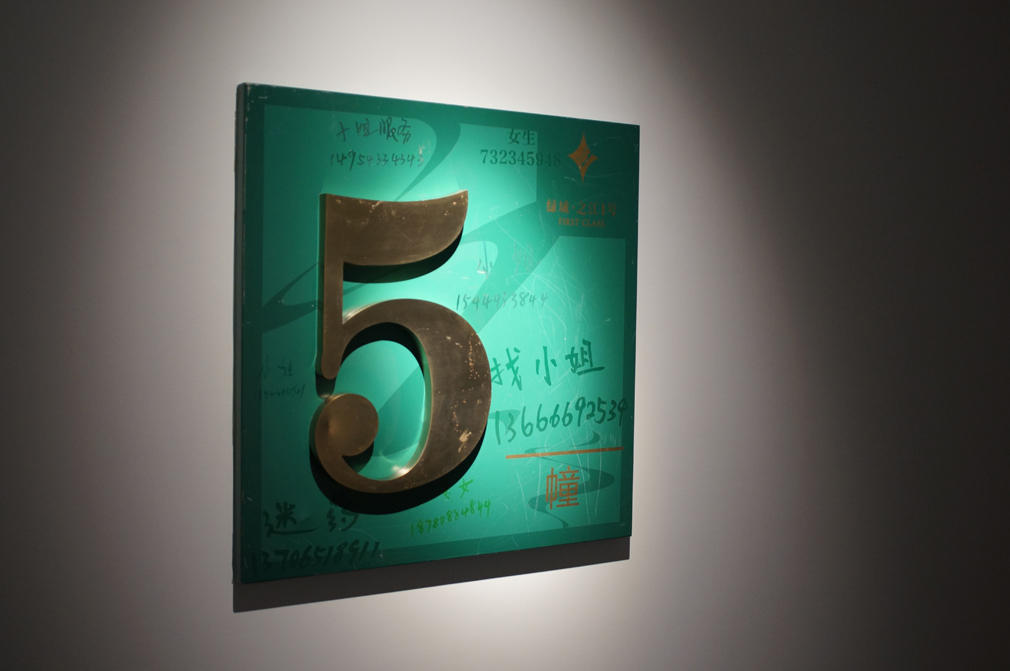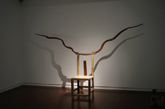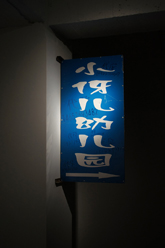Fu Hang Tai
Jin Shi
Exhibition Dates:6 September – 19 October, 2014
Opening Reception:Saturday, 6 September 2014, 3- 6 pm
About Exhibition
Michael Ku Gallery is pleased to announce Fu Hang Tai, Jin Shi’s first solo exhibition in Taiwan. The show is composed of five sets of works made by the artist between 2013 and 2014, including Fu Hang Tai, Cherry Blossom Backyard, Backstreet II, Untitled and Is it true, or not? II. Most of the materials (including the utilization of materials and the artistic concepts) chosen for the five sets are drawn from abandoned found objects in our daily life which seem to have the least value, in an attempt to better approach and reflect the reality of our real life today. On the one hand, it is about observation and criticism over the society today. On the other hand, it implies the vitality in the objects themselves or providing a space of imagination regarding the environment we live in. Time is part of the concern of Jin Shi’s artistic language. Traces of time remain at the origins of many of his works, whether the raw materials are still being used or abandoned. However, such traces of time are not about seeking some nostalgic mood. Rather, they are the constituents which run naturally through the past and the present to form what we see today. The progress of time can reflect the states of people and their social contexts. The thread of the show does not start from a single clear axis but, based on an attitude that is closer to nature and reality, tends to juxtapose the five sets of works, just like the coexistence of diverse aspects of people and society.
“The work came from a tea scoop I made by myself. Since the bamboo joint was broken, I had no choice but to dig a breach in the form of a tunnel at the crevice in order to hide the flaw. Later, I found that it formed a few concentric circles with the cross-section of the bamboo joint outside. This looked very much like the Black Hole. I always felt it could lead to another world. Later, in a residence area, I found a similar tunnel in a device for poisoning the rats. Looking at the road repairs and the construction of buildings in our real life, I realized that what I had found was not Arcadia but a real world. There is an invisible power, even a destructive power that destroys with the least effort, a power that neither an individual nor a collective can resist. Therefore, I wanted to create a tunnel which is like the reality, like the power. Break, polish and pierce the objects that are more likely to be found in the ruins of our daily life. I wanted to imitate the irresistible violence in our reality, like laser beams, straight and unquestionable, which penetrate and also destroy everything. (When I made the works, I felt like the master of the universe. And when people dismantle houses, repair roads and build bridges, isn’t it like playing bricks? A phrase of a classic poem suddenly came to my mind, “in all his composed manner, boats of the enemy become ruins”….) I choose the title ‘Fu Hang Tai’ because the objects were found in Fuyang, Hangzhou and Taizhou. Choosing these objects was not so easy. Many abandoned objects were actually unsuitable. Similar to the way we name a highways, I took the abbreviation of the three places to become the title of the works, which also indicates the reason for creating the partial tunnels. The three places are in fact the same; all of them are vulnerable in the face of the violence of reality. None of them is relay station or destination. All of them are the starting point but not the destination.” –Jin Shi
About Jin Shi
Born in Henan, China in 1976, Jin Shi obtained his master’s degree from the Department of Sculpture of the China Academy of Fine Arts. Currently he works and lives in Hungzhou, teaching in the Department of Animation of the China Academy of Fine Arts. His work includes re-make of ready-mades, installation, photography, etc. The artist seeks curious aspects and conflicts within the traces of life which have become habits and corners that are ubiquitous yet often overlooked. A vivid and dynamic vitality is thus set against the everyday reality, a vitality that can be both violent and serene, reflecting the real sides of social reality while generating systems of values regarding human nature/life. These are the persistent concerns of Jin Shi’s work. What Jin Shi has been working on is to observe the aspects and significances of life through such artificial objects made out of human need. They can be spontaneous, forced, active, unconscious, loud or silent, yet in any situation, they are all precise and poignant. The artist does not employ artificial approaches to create spectacles of art but generally adopts rather valueless junks to make works, so that the works could be as close to real life as possible. In 2013, Jin Shi obtained a subvention from the Asian Cultural Council Taiwan Foundation. For his solo exhibition titled Unrealistic Reality: Solo Exhibition of Jin Shi (2009), Jin Shi won Off Festival Saab Award at Photo Espana. Besides, he won Young Artists Promotional Exhibition at Theme Exhibition Re-experimentation: a Reaffirmation of Will and Enlightenment of Beijing 798 Art Festival in 2009.







